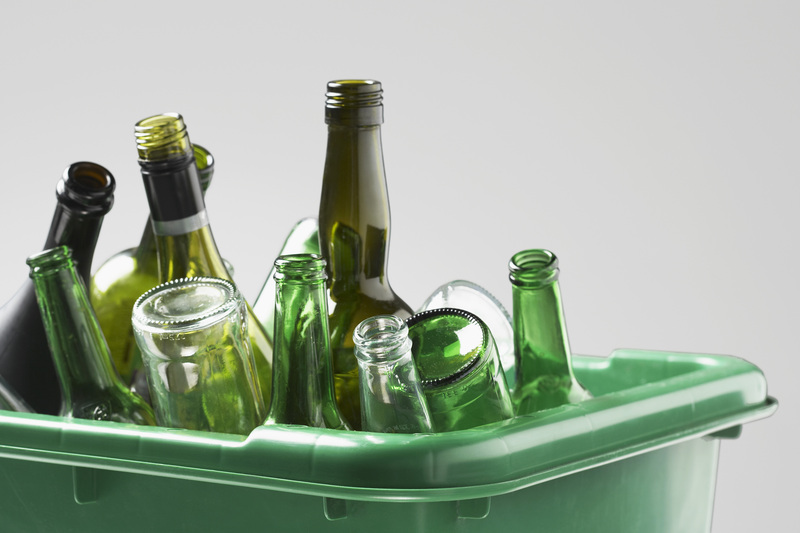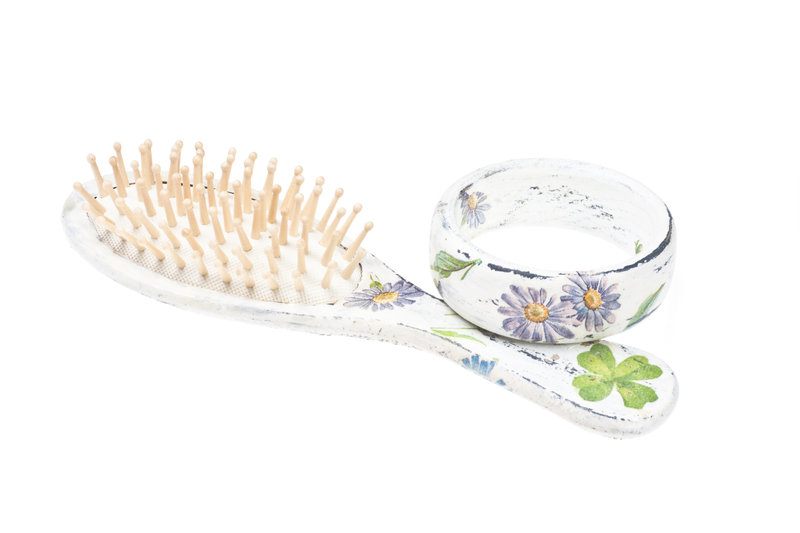Turn Broken Things into Artistic Statements with These Imaginative Upcycling Tips
Do you ever wonder what to do with broken items cluttering your home? Instead of tossing them away, why not turn broken things into artistic statements? Upcycling is a creative, eco-friendly solution that transforms old, unusable objects into innovative works of art. This comprehensive guide will provide you with imaginative upcycling tips, inspire your creativity, and teach you how to reimagine the ordinary into extraordinary pieces.
Why Upcycling Matters: More Than Just a Trend
Upcycling--also known as creative reuse--is the process of repurposing discarded or broken items into something of higher value or quality. Unlike recycling, which breaks materials down, upcycling preserves most of the item's original form, minimizing waste and reducing the need for new materials.
- Environmental benefits: Cutting down on landfill waste and conserving natural resources.
- Personal expression: Upcycling encourages unique, individual statement pieces that reflect your personality.
- Budget-friendly decor: Saving money by transforming broken or unwanted things into functional or decorative treasures.
Turning broken things into creative art helps tackle environmental issues while adding a touch of unique flair to your living spaces.

Getting Started: Mindset and Preparation
Anyone can upcycle broken things into artistic statements--no elaborate skills or expensive tools required. All you need is curiosity, patience, and a willingness to experiment!
Gather Your Broken Treasures
- Shattered ceramics
- Old picture frames
- Torn textiles or clothing
- Damaged electronics
- Broken jewelry
- Cracked glassware
- Discarded furniture
- Broken musical instruments
Tools and Materials for Creative Upcycling
- Glue (wood, fabric, or super glue)
- Paints and brushes
- Sandpaper
- Screws and screwdrivers
- Wire, string, or rope
- Decorative papers and textiles
- Beads, buttons, and found objects
With these essentials, you're ready to give broken things new artistic purpose!
Imaginative Upcycling Tips for Turning Broken Things into Art
1. Mosaic Magic: Repurpose Broken Ceramics and Glass
Broken plates, cups, and tiles might seem like trash, but their vibrant fragments have potential. Create stunning mosaics for tabletops, flower pots, or wall art by gluing ceramic or glass shards into intricate patterns. Use grout to fill the gaps and seal your masterpiece.
- Pro Tip: Wear gloves and eye protection when handling sharp edges. Arrange patterns before gluing to find the best composition.
2. Picture Frame Rebirth: Decorate with Layers and Texture
Don't throw out chipped or broken photo frames! Sand rough edges and add a fresh coat of paint. Decorate with beads, seashells, fabric scraps, or broken jewelry for stunning, textured borders. Turn ordinary frames into striking displays for mirrors, artwork, or family photos.
3. Tattered Textiles Become Patchwork Masterpieces
Worn-out clothing, torn fabric, or lonely socks have hidden potential. Sewpatchwork pillows, quilts, or wall hangings using fiber arts techniques. Mix patterns, textures, and colors to create one-of-a-kind textile art that tells a story.
- Try applique shapes, embroidery, or using fabric paint for added detail.
4. Glassware, Renewed: Suncatchers and Terrariums
Missing the handle on your teacup or the bottom of a vase? Transform broken glassware into hanging suncatchers with colored glass bits, wire, and beads. Or use larger shards to assemble a unique terrarium for succulents and small plants.
5. Turn Old Electronics into Sci-Fi Sculptures
Dead smartphones, tangled wires, and obsolete keyboards can find new life as futuristic art, desk organizers, or steampunk-inspired home decor. Gently disassemble broken electronics (take safety precautions!), then glue, stack, or screw together components to invent your own mechanical creatures or cyborg-inspired candleholders.
6. Jewelry Mash-ups: Wearable Art from Fragments
Broken earrings, missing stones, and outdated necklaces don't belong in the landfill. Twist, braid, or attach fragments onto new chains, fabric, or wire to create statement necklaces, eclectic charm bracelets, or brooches. Layer different pieces for a bohemian, artsy look.
7. Furniture Fantasy: From Ruin to Reuse
Dressers with missing drawers, cracked tables, or wobbly chairs can gain new artistic purpose. Instead of landfill, try:
- Using old drawers as wall-mounted shelves
- Turning table legs into coat racks or candle holders
- Painting, decoupaging, or stenciling to mask damage and elevate style
With a little imagination, broken furniture pieces can add charm and character to any room.
8. Instrumental Art: Music-Inspired Decor
If you have a broken violin, guitar, or drum, give it a second act as wall art, a shelf, or a whimsical planter. Paint intricate designs, add lights, or fill hollow space with flowers to create a truly show-stopping focal point in your home or studio.
9. Broken Book Transformations
Torn, water-damaged, or obsolete books can become astonishing art objects. Fold pages into geometric shapes, carve out hidden compartments, or decoupage interesting text onto other surfaces. Frame meaningful pages or bundle covers as conversation pieces.
Expert Advice: How to Make Upcycled Art That Stands Out
- Tell a story: Let each piece say something unique--about you, its origin, or its journey.
- Mix materials: Combine wood, glass, fabric, and metal for contrast and texture.
- Embrace imperfection: Highlight cracks, chips, or patina as proof of the item's history.
- Choose a color palette: Keeping hues coordinated gives even the wildest assemblages a cohesive look.
- Share your work: Inspire others by displaying upcycled creations proudly, gifting them, or posting on social media with hashtags like #upcycledart or #creativeupcycling.
Sustainable Upcycling: How to Source Broken Things Ethically
Not everyone has a wealth of broken items at home. Here are ways to find material for your next artistic upcycling project:
- Visit local thrift stores or salvage yards
- Search for donation days or free piles in your neighborhood
- Host an "upcycling swap" with friends
- Ask at repair shops for discarded electronics or instruments
- Look for construction site leftovers (always ask for permission)
Safety First: Best Practices for Upcycling Broken Things
- Always wear gloves and protective eyewear when handling sharp or hazardous items
- Work in a ventilated area, especially when using glue, paint, or power tools
- Keep a first aid kit handy for minor cuts or scrapes
- Dispose of any non-recyclable hazardous materials (like batteries or certain electronics) responsibly

Conclusion: Make Every Broken Thing a Creative Opportunity
Upcycling encourages us to see the beauty in imperfection and to turn broken things into powerful artistic statements. By rescuing objects bound for the landfill, we not only help the planet but also celebrate our creativity, ingenuity, and resourcefulness. So the next time something breaks, resist the urge to throw it away--let your imagination lead the way to your next upcycled masterpiece!
Start today: gather your broken things, use these imaginative upcycling tips, and transform the forgotten into unforgettable works of art.
Frequently Asked Questions: Artistic Upcycling of Broken Things
-
What is the difference between upcycling and recycling?
Upcycling transforms items into higher-value art or objects without breaking them down, while recycling processes materials for reuse, often with greater resource input. -
I'm not an artist. Can I still upcycle creatively?
Absolutely! Upcycling is about experimentation and creativity, not perfection. There are endless approachable techniques anyone can try. -
What types of broken things are safest to upcycle?
Most household items, furniture, textiles, and some electronics are safe with precautions, but avoid toxic materials or those with sharp/glass shards if you're unsure. -
How can I profit from my upcycled art?
Many people sell upcycled creations online via Etsy, craft fairs, or local galleries. High-quality photos and unique ideas are key! -
Where can I find more upcycling inspiration?
Follow upcycling blogs, YouTube tutorials, and Pinterest boards for fresh ideas, or join local maker communities.
Embrace the potential of broken things and let your imagination shine--happy upcycling!